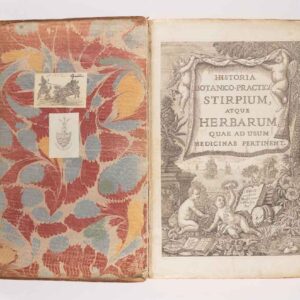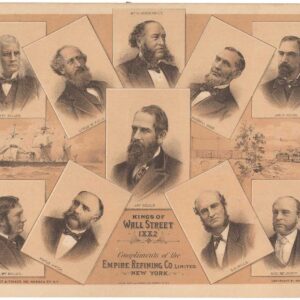A large-format German liturgical calendar in the Medieval style.
Das Jahr der Kirche [The Year of the Church]
$475
1 in stock
Description
A scarce example of German evangelical ephemera.
This striking and highly symbolic Evangelischer Jahreskreis (“Evangelical Year Circle”) visualizes the rhythm of the Christian liturgical year through a circular theological diagram that fuses time, nature, and salvation history into a single sacred cosmology. Originally designed in the 1920s by theologian and nationalist politician Karl Bernhard Ritter, the work was redrawn after World War II by Annelise Keller and Lise Hämpe and published in 1951 by Johannes Stauda Verlag in Kassel.
At its center shines the Chi-Rho monogram of Christ, from which four radiant spokes extend, dividing the ecclesiastical year into the seasons of Advent–Christmas, Epiphany–Lent, Easter–Pentecost, and Trinity–End Times. Each quadrant lists the Sundays, feasts, and scriptural themes of that season, forming a continuous cycle of birth, death, and resurrection. The division of the circle into a red cross gives the composition its axial balance, transforming time itself into a Christocentric symbol. Surrounding the circle are emblems of the Four Evangelists—man, lion, bull, and eagle—corresponding to St. Matthew, St. Mark, St. Luke, and St. John. These, in turn, allude to Ezekiel’s vision of the archangels, representing intelligence, power, humility, and swiftness.
Around the perimeter appear the **four elements—fire, water, air, and earth—**alongside symbols of creation, judgment, and renewal, situating the church year within both cosmic and eschatological time. The text interwoven around the border combines scriptural citations and hymn verses, integrating theology and devotion into a unified visual meditation.
A rare survival of postwar German ecclesiastical design, this edition of the Evangelischer Jahreskreis exemplifies the continuity of Protestant sacred art from the Weimar era through reconstruction-era Germany. Both pedagogical and contemplative, it translates the abstract rhythm of the church calendar into a luminous diagram of divine order—where the turning of the year mirrors the eternal cycle of redemption.
Cartographer(s):
Condition Description
Very good.
References





